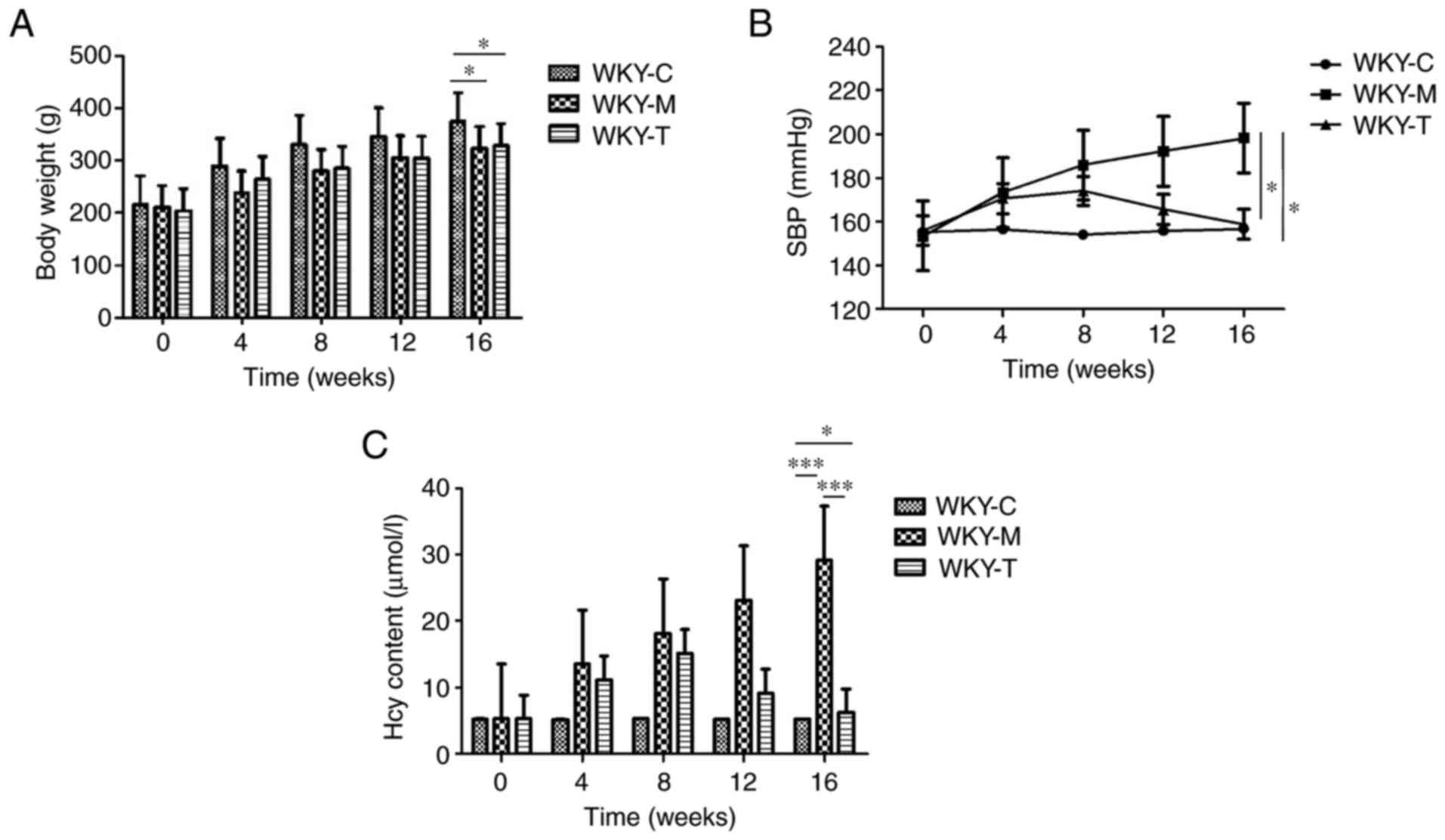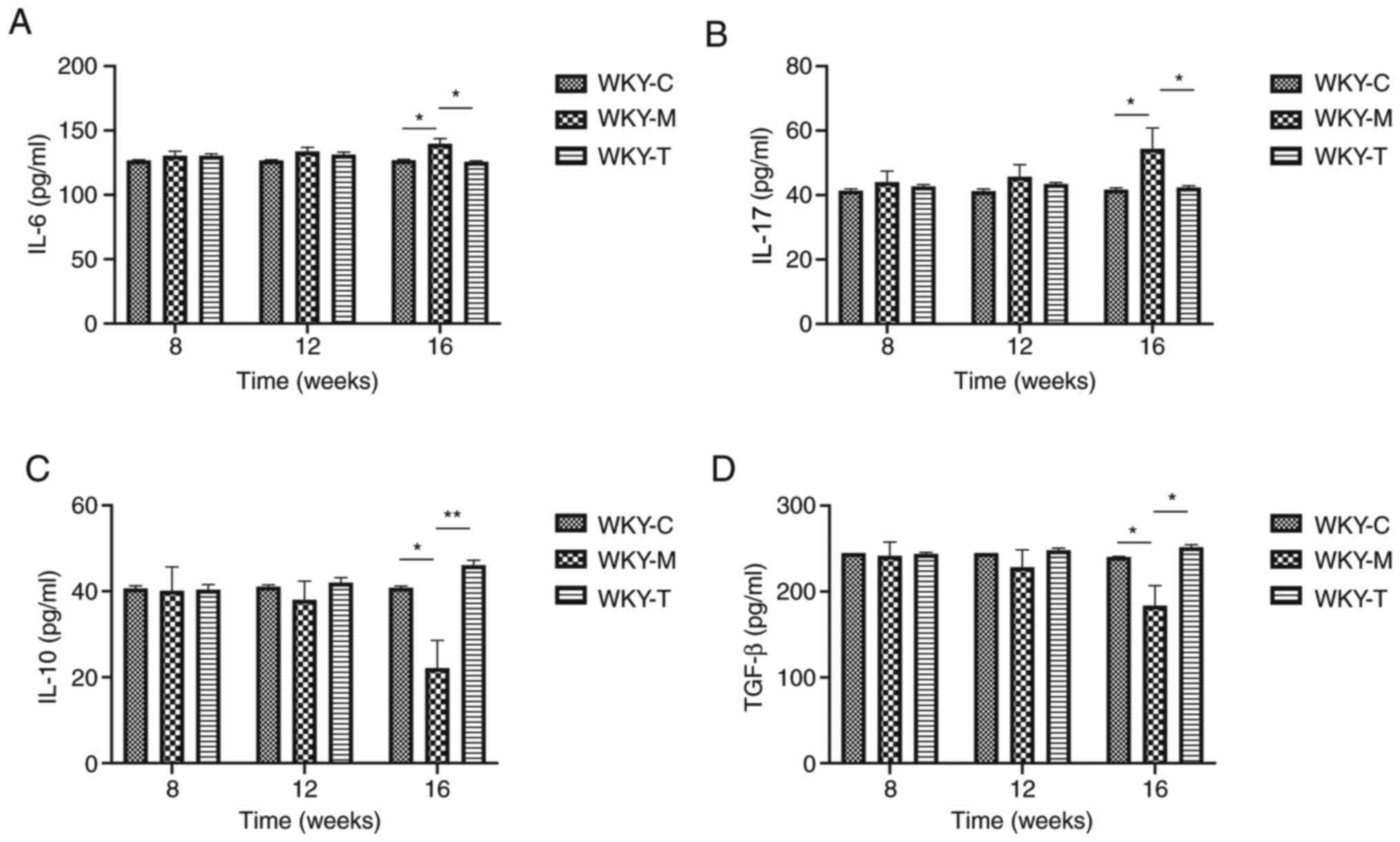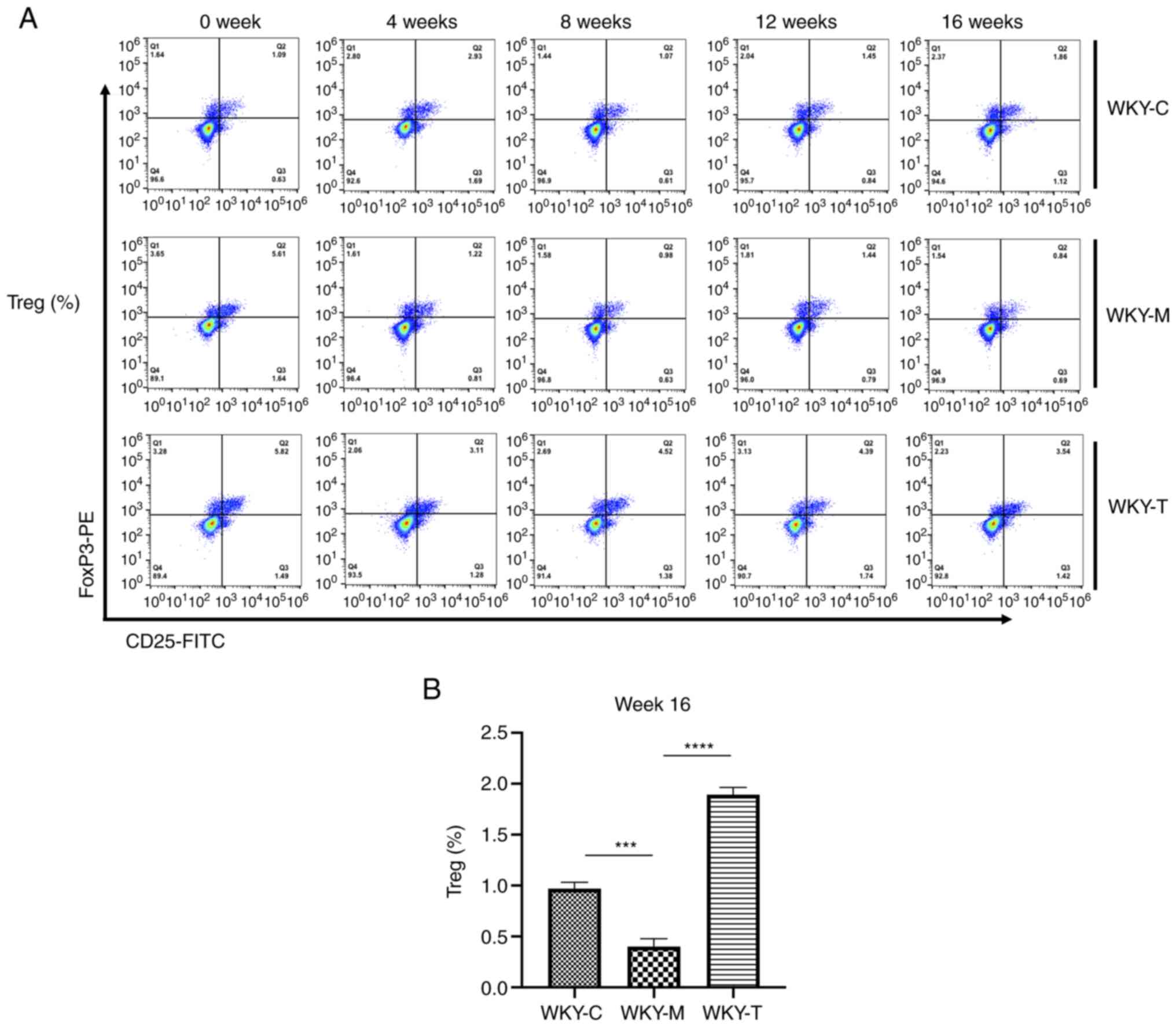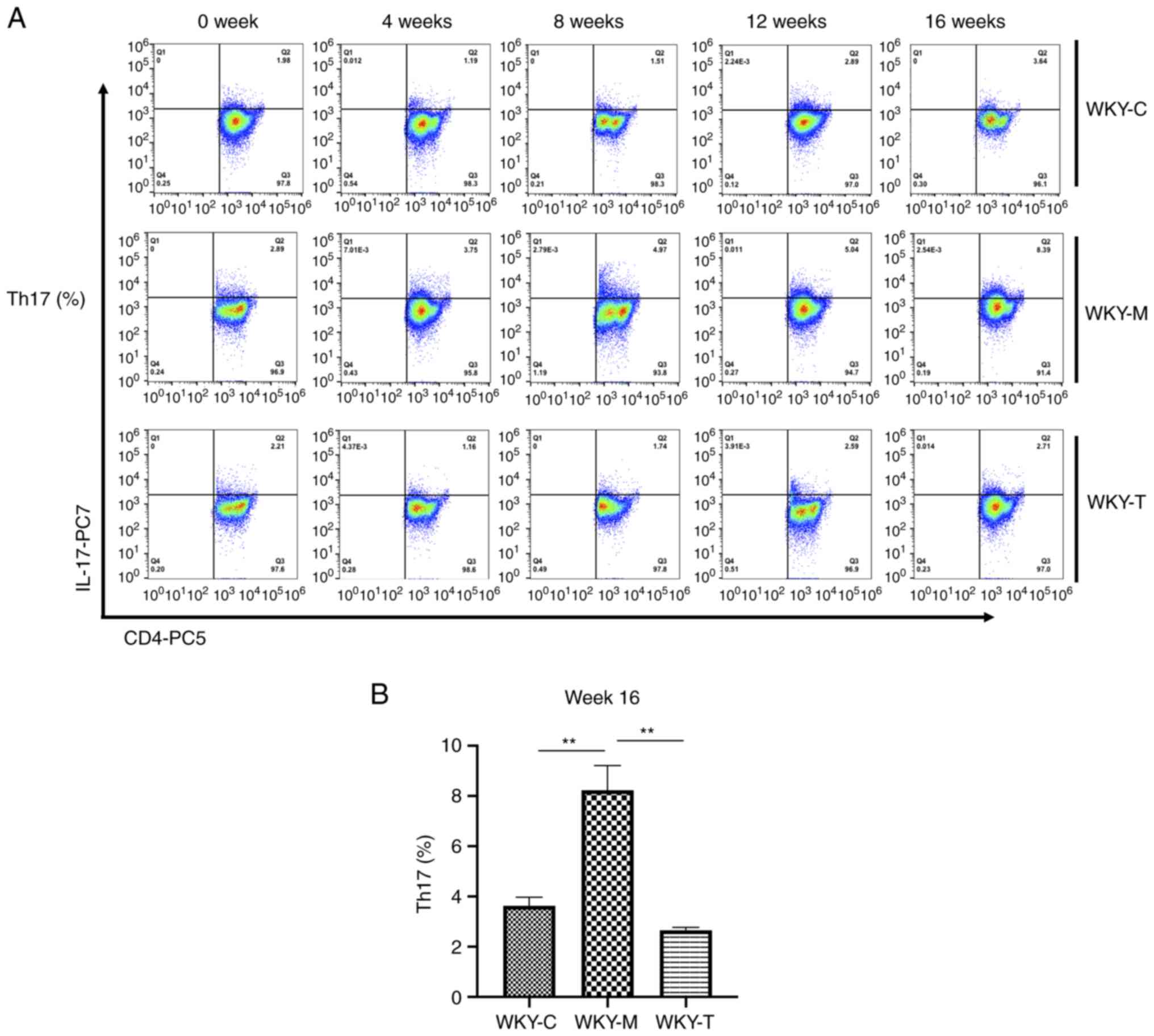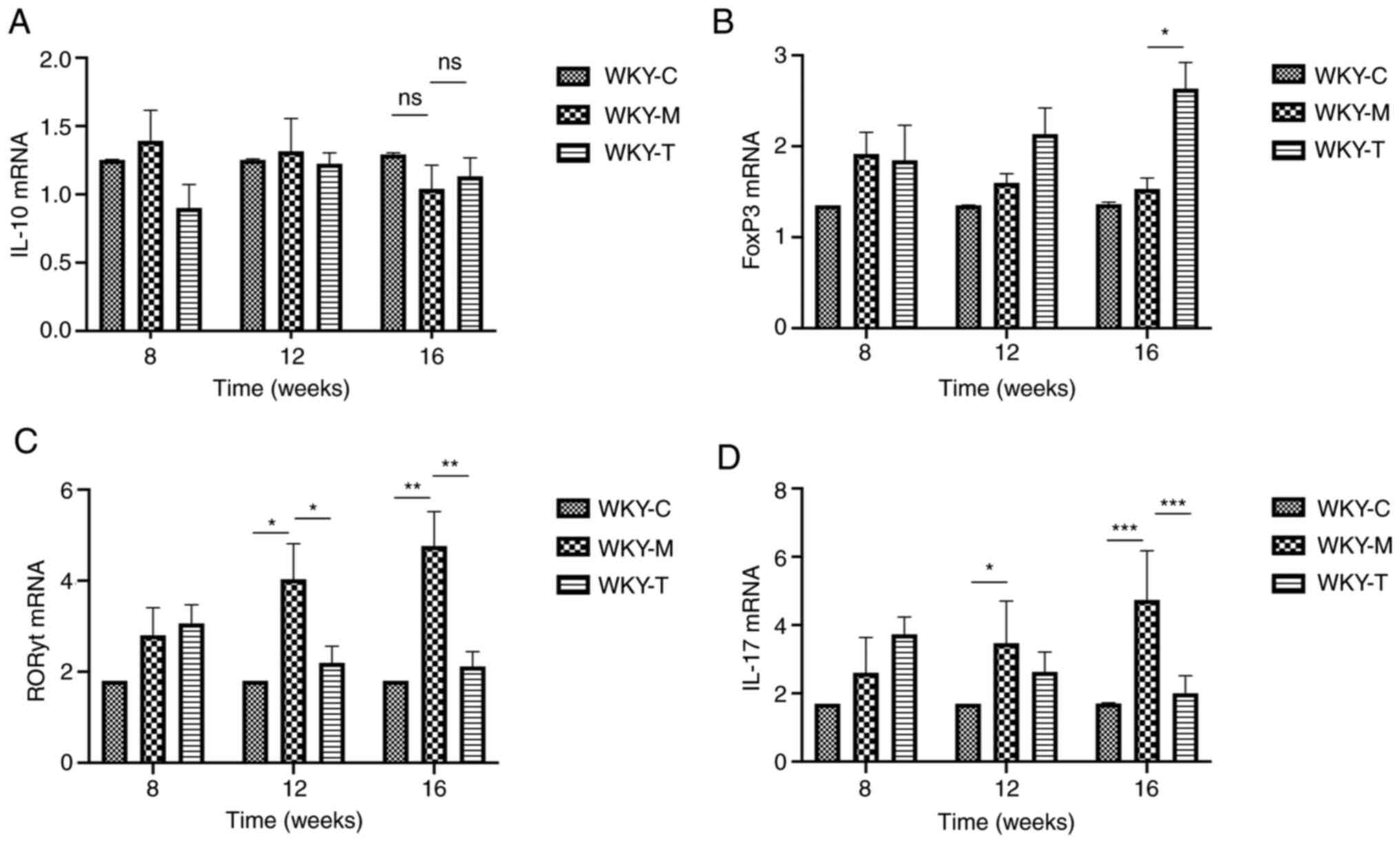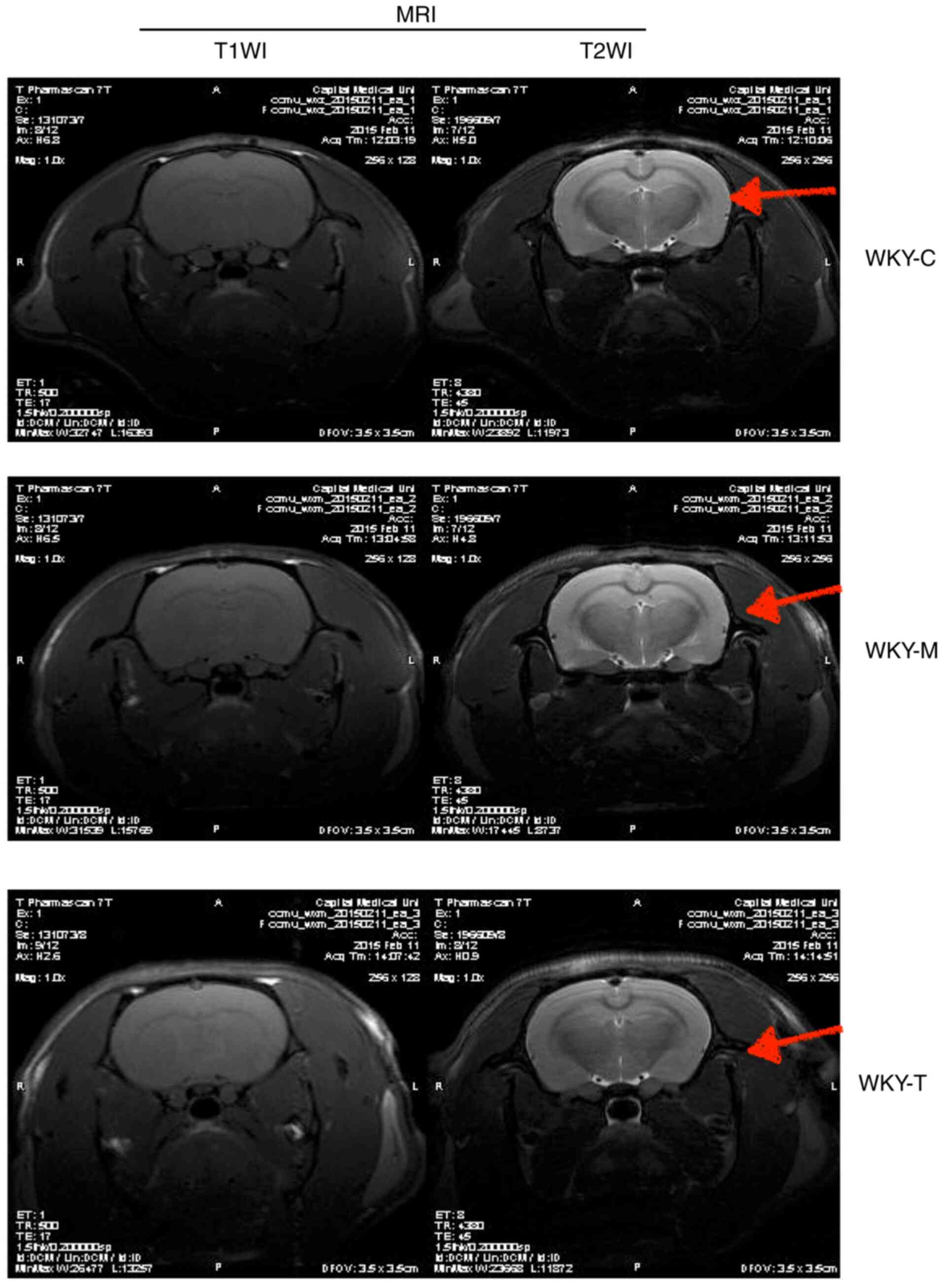|
1
|
Djuric D, Jakovljevic V, Zivkovic V and
Srejovic I: Homocysteine and homocysteine-related compounds: An
overview of the roles in the pathology of the cardiovascular and
nervous systems. Can J Physiol Pharmacol. 96:991–1003.
2018.PubMed/NCBI View Article : Google Scholar
|
|
2
|
Ganguly P and Alam SF: Role of
homocysteine in the development of cardiovascular disease. Nutr J.
14(6)2015.PubMed/NCBI View Article : Google Scholar
|
|
3
|
Spence JD: Homocysteine lowering for
stroke prevention: Unravelling the complexity of the evidence. Int
J Stroke. 11:744–747. 2016.PubMed/NCBI View Article : Google Scholar
|
|
4
|
McCully KS: Vascular pathology of
homocysteinemia: Implications for the pathogenesis of
arteriosclerosis. Am J Pathol. 56:111–128. 1969.PubMed/NCBI
|
|
5
|
Kim J, Kim H, Roh H and Kwon Y: Causes of
hyperhomocysteinemia and its pathological significance. Arch Pharm
Res. 41:372–383. 2018.PubMed/NCBI View Article : Google Scholar
|
|
6
|
Azad MAK, Huang P, Liu G, Ren W, Teklebrh
T, Yan W, Zhou X and Yin Y: Hyperhomocysteinemia and cardiovascular
disease in animal model. Amino Acids. 50:3–9. 2018.PubMed/NCBI View Article : Google Scholar
|
|
7
|
Capelli I, Cianciolo G, Gasperoni L,
Zappulo F, Tondolo F, Cappuccilli M and La Manna G: Folic acid and
vitamin B12 administration in CKD, why not? Nutrients.
11(383)2019.PubMed/NCBI View Article : Google Scholar
|
|
8
|
Dardiotis E, Arseniou S, Sokratous M,
Tsouris Z, Siokas V, Mentis AA, Michalopoulou A, Andravizou A,
Dastamani M, Paterakis K, et al: Vitamin B12, folate, and
homocysteine levels and multiple sclerosis: A meta-analysis. Mult
Scler Relat Disord. 17:190–197. 2017.PubMed/NCBI View Article : Google Scholar
|
|
9
|
Pawlak R: Is vitamin B12 deficiency a risk
factor for cardiovascular disease in vegetarians? Am J Prev Med.
48:e11–e26. 2015.PubMed/NCBI View Article : Google Scholar
|
|
10
|
Dinavahi R and Falkner B: Relationship of
homocysteine with cardiovascular disease and blood pressure. J Clin
Hypertens (Greenwich). 6:494–498; quiz 499-500. 2004.PubMed/NCBI View Article : Google Scholar
|
|
11
|
Stehouwer CD and van Guldener C: Does
homocysteine cause hypertension? Clin Chem Lab Med. 41:1408–1411.
2003.PubMed/NCBI View Article : Google Scholar
|
|
12
|
van Guldener C, Nanayakkara PW and
Stehouwer CD: Homocysteine and blood pressure. Curr Hypertens Rep.
5:26–31. 2003.PubMed/NCBI View Article : Google Scholar
|
|
13
|
Beard RS Jr, Reynolds JJ and Bearden SE:
Hyperhomocysteinemia increases permeability of the blood-brain
barrier by NMDA receptor-dependent regulation of adherens and tight
junctions. Blood. 118:2007–2014. 2011.PubMed/NCBI View Article : Google Scholar
|
|
14
|
Ehrlich D and Humpel C: Chronic vascular
risk factors (cholesterol, homocysteine, ethanol) impair spatial
memory, decline cholinergic neurons and induce blood-brain barrier
leakage in rats in vivo. J Neurol Sci. 322:92–95. 2012.PubMed/NCBI View Article : Google Scholar
|
|
15
|
Kalani A, Kamat PK, Familtseva A,
Chaturvedi P, Muradashvili N, Narayanan N, Tyagi SC and Tyagi N:
Role of microRNA29b in blood-brain barrier dysfunction during
hyperhomocysteinemia: An epigenetic mechanism. J Cereb Blood Flow
Metab. 34:1212–1222. 2014.PubMed/NCBI View Article : Google Scholar
|
|
16
|
Kamath AF, Chauhan AK, Kisucka J, Dole VS,
Loscalzo J, Handy DE and Wagner DD: Elevated levels of homocysteine
compromise blood-brain barrier integrity in mice. Blood.
107:591–593. 2006.PubMed/NCBI View Article : Google Scholar
|
|
17
|
Le Stunff H, Véret J, Kassis N, Denom J,
Meneyrol K, Paul JL, Cruciani-Guglielmacci C, Magnan C and Janel N:
Deciphering the link between hyperhomocysteinemia and ceramide
metabolism in Alzheimer-type neurodegeneration. Front Neurol.
10(807)2019.PubMed/NCBI View Article : Google Scholar
|
|
18
|
Lee H, Kim HJ, Kim JM and Chang N: Effects
of dietary folic acid supplementation on cerebrovascular
endothelial dysfunction in rats with induced hyperhomocysteinemia.
Brain Res. 996:139–147. 2004.PubMed/NCBI View Article : Google Scholar
|
|
19
|
Ford TC, Downey LA, Simpson T, McPhee G,
Oliver C and Stough C: The effect of a high-dose vitamin B
multivitamin supplement on the relationship between brain
metabolism and blood biomarkers of oxidative stress: A randomized
control trial. Nutrients. 10(1860)2018.PubMed/NCBI View Article : Google Scholar
|
|
20
|
Kennedy DO and Haskell CF: Vitamins and
cognition: What is the evidence? Drugs. 71:1957–1971.
2011.PubMed/NCBI View Article : Google Scholar
|
|
21
|
Pirchl M, Ullrich C, Sperner-Unterweger B
and Humpel C: Homocysteine has anti-inflammatory properties in a
hypercholesterolemic rat model in vivo. Mol Cell Neurosci.
49:456–463. 2012.PubMed/NCBI View Article : Google Scholar
|
|
22
|
Zhang Y, Wang L, Zhou X, Geng J and Li X:
The immunomodulatory mechanism of brain injury induced by
hyperhomocysteinemia in spontaneously hypertensive rats. J Cell
Biochem. 120:9421–9429. 2019.PubMed/NCBI View Article : Google Scholar
|
|
23
|
Lee GR: The Balance of Th17 versus treg
cells in autoimmunity. Int J Mol Sci. 19(730)2018.PubMed/NCBI View Article : Google Scholar
|
|
24
|
Crouser ED: Role of imbalance between Th17
and regulatory T-cells in sarcoidosis. Curr Opin Pulm Med.
24:521–526. 2018.PubMed/NCBI View Article : Google Scholar
|
|
25
|
Melnik BC, John SM, Chen W and Plewig G: T
helper 17 cell/regulatory T-cell imbalance in hidradenitis
suppurativa/acne inversa: The link to hair follicle dissection,
obesity, smoking and autoimmune comorbidities. Br J Dermatol.
179:260–272. 2018.PubMed/NCBI View Article : Google Scholar
|
|
26
|
Hang S, Paik D, Yao L, Kim E, Trinath J,
Lu J, Ha S, Nelson BN, Kelly SP, Wu L, et al: Bile acid metabolites
control TH17 and Treg cell differentiation.
Nature. 576:143–148. 2019.PubMed/NCBI View Article : Google Scholar
|
|
27
|
Levine AG, Mendoza A, Hemmers S, Moltedo
B, Niec RE, Schizas M, Hoyos BE, Putintseva EV, Chaudhry A, Dikiy
S, et al: Stability and function of regulatory T cells expressing
the transcription factor T-bet. Nature. 546:421–425.
2017.PubMed/NCBI View Article : Google Scholar
|
|
28
|
Coder B, Wang W, Wang L, Wu Z, Zhuge Q and
Su DM: Friend or foe: The dichotomous impact of T cells on
neuro-de/re-generation during aging. Oncotarget. 8:7116–7137.
2017.PubMed/NCBI View Article : Google Scholar
|
|
29
|
Schmitt V, Rink L and Uciechowski P: The
Th17/Treg balance is disturbed during aging. Exp Gerontol.
48:1379–1386. 2013.PubMed/NCBI View Article : Google Scholar
|
|
30
|
Health N: Guide for the care and use of
laboratory animals. NIH contract No. No1-RR-2-2135. 11–28.
1985.
|
|
31
|
Leary SL, Underwood W, Anthony R, et al:
AVMA guidelines for the euthanasia of animals: 2013 edition.
American Veterinary Medical Association Schaumburg, IL, 2013.
|
|
32
|
McGee HM, Daly ME, Azghadi S, Stewart SL,
Oesterich L, Schlom J, Donahue R, Schoenfeld JD, Chen Q, Rao S, et
al: Stereotactic ablative radiation therapy induces systemic
differences in peripheral blood immunophenotype dependent on
irradiated site. Int J Radiat Oncol Biol Phys. 101:1259–1270.
2018.PubMed/NCBI View Article : Google Scholar
|
|
33
|
Livak KJ and Schmittgen TD: Analysis of
relative gene expression data using real-time quantitative PCR and
the 2(-Delta Delta C(T)) method. Methods. 25:402–408.
2001.PubMed/NCBI View Article : Google Scholar
|
|
34
|
Schindelin J, Rueden CT, Hiner MC and
Eliceiri KW: The ImageJ ecosystem: An open platform for biomedical
image analysis. Mol Reprod Dev. 82:518–529. 2015.PubMed/NCBI View Article : Google Scholar
|
|
35
|
Wen M, Lian Z, Huang L, Zhu S, Hu B, Han
Y, Deng Y and Zeng H: Magnetic resonance spectroscopy for
assessment of brain injury in the rat model of sepsis. Exp Ther
Med. 14:4118–4124. 2017.PubMed/NCBI View Article : Google Scholar
|
|
36
|
Kovalska M, Hnilicova P, Kalenska D,
Tothova B, Adamkov M and Lehotsky J: Effect of methionine diet on
metabolic and histopathological changes of rat hippocampus. Int J
Mol Sci. 20(6234)2019.PubMed/NCBI View Article : Google Scholar
|
|
37
|
Jindal A, Rajagopal S, Winter L, Miller
JW, Jacobsen DW, Brigman J, Allan AM, Paul S and Poddar R:
Hyperhomocysteinemia leads to exacerbation of ischemic brain
damage: Role of GluN2A NMDA receptors. Neurobiol Dis. 127:287–302.
2019.PubMed/NCBI View Article : Google Scholar
|
|
38
|
Daneman R and Prat A: The blood-brain
barrier. Cold Spring Harb Perspect Biol. 7(a020412)2015.PubMed/NCBI View Article : Google Scholar
|
|
39
|
Keaney J and Campbell M: The dynamic
blood-brain barrier. FEBS J. 282:4067–4079. 2015.PubMed/NCBI View Article : Google Scholar
|
|
40
|
Liebner S, Dijkhuizen RM, Reiss Y, Plate
KH, Agalliu D and Constantin G: Functional morphology of the
blood-brain barrier in health and disease. Acta Neuropathol.
135:311–336. 2018.PubMed/NCBI View Article : Google Scholar
|
|
41
|
Sweeney MD, Zhao Z, Montagne A, Nelson AR
and Zlokovic BV: Blood-brain barrier: From physiology to disease
and back. Physiol Rev. 99:21–78. 2019.PubMed/NCBI View Article : Google Scholar
|
|
42
|
Varatharaj A and Galea I: The blood-brain
barrier in systemic inflammation. Brain Behav Immun. 60:1–12.
2017.PubMed/NCBI View Article : Google Scholar
|
|
43
|
Lee H, Kim JM, Kim HJ, Lee I and Chang N:
Folic acid supplementation can reduce the endothelial damage in rat
brain microvasculature due to hyperhomocysteinemia. J Nutr.
135:544–548. 2005.PubMed/NCBI View Article : Google Scholar
|
|
44
|
Tchantchou F, Goodfellow M, Li F, Ramsue
L, Miller C, Puche A and Fiskum G: Hyperhomocysteinemia-induced
oxidative stress exacerbates cortical traumatic brain injury
outcomes in rats. Cell Mol Neurobiol. 41:487–503. 2021.PubMed/NCBI View Article : Google Scholar
|
|
45
|
Faverzani JL, Hammerschmidt TG, Sitta A,
Deon M, Wajner M and Vargas CR: Oxidative stress in homocystinuria
due to cystathionine ß-synthase deficiency: Findings in patients
and in animal models. Cell Mol Neurobiol. 37:1477–1485.
2017.PubMed/NCBI View Article : Google Scholar
|
|
46
|
Kamat PK, Kalani A, Givvimani S, Sathnur
PB, Tyagi SC and Tyagi N: Hydrogen sulfide attenuates
neurodegeneration and neurovascular dysfunction induced by
intracerebral-administered homocysteine in mice. Neuroscience.
252:302–319. 2013.PubMed/NCBI View Article : Google Scholar
|
|
47
|
Lehotský J, Tothová B, Kovalská M, Dobrota
D, Beňová A, Kalenská D and Kaplán P: Role of Homocysteine in the
ischemic stroke and development of ischemic tolerance. Front
Neurosci. 10(538)2016.PubMed/NCBI View Article : Google Scholar
|
|
48
|
Tóthová B, Kovalská M, Kalenská D,
Tomašcová A and Lehotský J: Histone hyperacetylation as a response
to global brain ischemia associated with hyperhomocysteinemia in
rats. Int J Mol Sci. 19(3147)2018.PubMed/NCBI View Article : Google Scholar
|
|
49
|
Vacek JC, Behera J, George AK, Kamat PK,
Kalani A and Tyagi N: Tetrahydrocurcumin ameliorates
homocysteine-mediated mitochondrial remodeling in brain endothelial
cells. J Cell Physiol. 233:3080–3092. 2018.PubMed/NCBI View Article : Google Scholar
|
|
50
|
Gao X, Li J and Chen M: Effect of
homocysteine on the differentiation of CD4+T Cells into
Th17 cells. Dig Dis Sci. 63:3339–3347. 2018.PubMed/NCBI View Article : Google Scholar
|
|
51
|
Lin X, Meng X and Song Z: Homocysteine and
psoriasis. Biosci Rep. 39(BSR20190867)2019.PubMed/NCBI View Article : Google Scholar
|
|
52
|
Feng J, Zhang Z, Kong W, Liu B, Xu Q and
Wang X: Regulatory T cells ameliorate
hyperhomocysteinaemia-accelerated atherosclerosis in apoE-/-mice.
Cardiovasc Res. 84:155–163. 2009.PubMed/NCBI View Article : Google Scholar
|
|
53
|
Rodriguez-Iturbe B, Pons H and Johnson RJ:
Role of the immune system in hypertension. Physiol Rev.
97:1127–1164. 2017.PubMed/NCBI View Article : Google Scholar
|
|
54
|
Karolczak K, Kubalczyk P, Glowacki R,
Pietruszynski R and Watala C: Aldosterone modulates blood
homocysteine and cholesterol in coronary artery disease patients-a
possible impact on atherothrombosis? Physiol Res. 67:197–207.
2018.PubMed/NCBI View Article : Google Scholar
|















